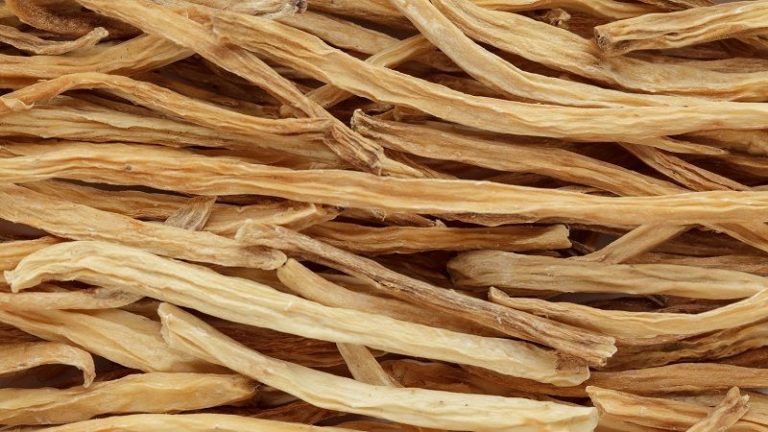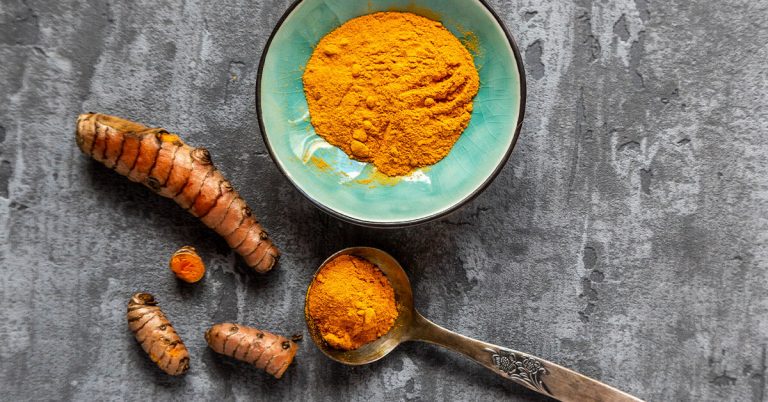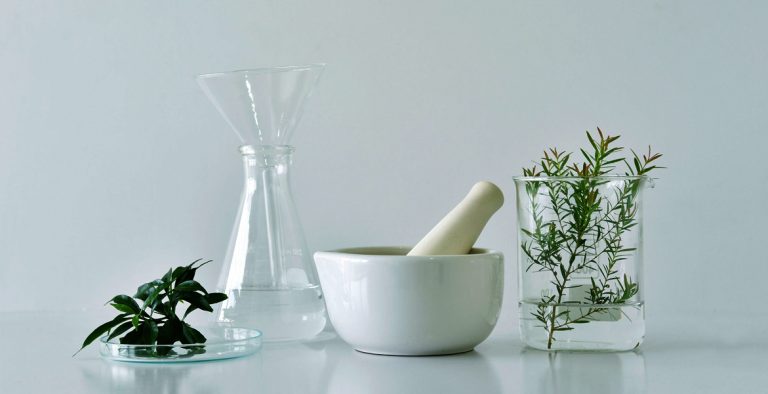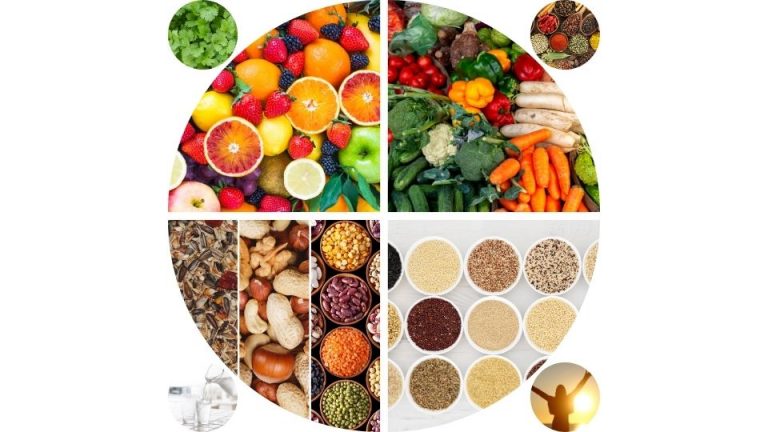Shatavari (Asparagus Racemosus) is a powerful therapeutic agent, which is of great importance in Ayurveda. It promotes overall well-being and good health. It is one solution to many health conditions. Shatavari means ‘acceptable to many’.
Shatavari is a special female tonic because it helps women of all age groups to transit through natural phases of life very gracefully. Shatavari roots are very helpful during menstruation because it relieves abdominal cramps and spasms. It strengthens the uterus. During lactation, it stimulates the production of breast milk. The last but not the least it also helps women during menopause.
Besides this, Shatavari roots are have been found to be very useful in the treatment and control of diabetes mellitus, high cholesterol and triglyceride levels, cancer, bacterial and fungal infections, oedema, infertility and depression.
Botanical Description
Botanically, Shatavari is Asparagus Racemosus.
Common Names
| English Name | Asparagus, Asparagus Root, Indian Asparagus |
| Hindi Name | Shatavari |
| Sanskrit Name | SHATAVARI, SHATMULI, ATIRASA, SHATVIRYA |
| Also Spelled As | SATAWARI, SATMULI, CHATAVALI, SITAWARI, SATAWAR, SATVAR, SATMOOLI |
Botanical Classification (Plant Taxonomy)
| Kingdom | PLANTAE |
| Sub-Kingdom | VIRIDIPLANTAE |
| Infra Kingdom | STREPTOPHYTA (land plants) |
| Super Division | EMBRYOPHYTA |
| Division | TRACHEOPHYTA (TRACHEOPHYTES or Vascular Plants) |
| Sub Division | SPERMATOPHYTINA (SPERMATOPHYTES or Seed Plants) |
| Class | MAGNOLIOPSIDA |
| Super Order | LILIANAE (monocots, monocotyledons) |
| Order | ASPARAGALES |
| Family | ASPARAGACEAE |
| Genus | ASPARAGUS |
| Species | A. RACEMOSUS |
Plant Description
| Native Range (Geographic Distribution) | Shatavari is widely grown across different tropical parts of the world such as Asia, India, Australia and Africa. |
| Height (grows up to) | Shatavari is a tall, climbing, thorny under shrub and it grows one to two meters tall. |
| Habitat (type of environment) | It is usually grown at low altitudes in shade and in tropical climates throughout Asia, Australia and Africa. |
| Roots | Shatavari roots are light pale to brown in color and they are soft and pliable. |
| Leaves | Shatavari leaves are pine needles, uniform and small. These leaves are linear with a stout conical spiny spur. |
| Flowers | Shatavari flowers are white in color and have small spikes. |
| Fruits | Its fruits are round berries, which are purple to black in color. |
| Soil | Shatavari prefers to take root in rocky and gravelly soils. |
Medicinal Parts
Shatavari roots are mainly used for therapeutic purposes. Shatavari Churna (Asparagus root powder) is generally used in ayurvedic medicine.
Phytochemistry (Active Constituents)
Shatavari is a great source of phytochemicals. Phytochemicals are plant chemicals that promote good health. It is found that phytochemicals present in Shatavari play an important role in strengthening immune system and, fighting oxidative stress. These active principles also possess anti-cancer activity. Different phytochemicals present in Shatavari include:
- Steroidal saponins knows as SHATAVARINS
- Alkaloids
- Oligosaccharides
- Mucilage
- Isoflavones
- Flavonoids such as QUERCETIN and RUTIN present in Shatavari fruits and flowers
- STEROLS such as SITOSTEROL present in Shatavari roots
Nutrients in Shatavari
Various minerals are abundantly present in Shatavari roots such as copper, manganese, zinc and cobalt. Other minerals present in good quantity include calcium, magnesium, selenium and potassium. Besides minerals, Shatavari also contain vitamins such as vitamin A and ascorbic acid. Essential fatty acid such as gamma linolenic acid is also present in Shatavari. Gamma linolenic acid is very beneficial for the treatment of arthritis, diabetes mellitus, high cholesterol levels, heart disease and depression. (1)
Medicinal Properties
Shatavari roots and leaves possess various medicinal properties such as:
- Immunomodulatory activity
- Anti-ulcerogenic
- Antioxidant activity
- Anti-cancer
- Anti-diabetic
- Anti-Candida
- Anti-inflammatory
- Antidiarrheal
- Antimicrobial
- Antidepressant
- Aphrodisiac
- Adaptogenic
Ayurvedic Properties
| Taste – RASA | MADHURA (Sweet), TIKTA (Bitter) |
| Main Quality – GUNA | GURU (Heavy),SNIGADH or SNEHA (Unctuous or Oily) |
| Potency – VIRYA | SHEETA (Cold) |
| Resultant – VIPAKA | MADHURA (Sweet) |
| Therapeutic Effect – PRABHAVA | Rejuvenation, Supplement & Tonic |
| DOSHA KARMA (Effect on Humors) | Pacifies VATA & PITTA |
| Dhatu (Tissue) Effect | RASA, RAKTA, & SHUKRA |
| Beneficial for Organs | All organs especially Stomach, Heart, Brain, Uterus, Ovaries, Testes |
Therapeutic Indications
Shatavari is helpful in the following conditions:
- High blood glucose levels or uncontrolled diabetes mellitus
- High cholesterol and triglyceride levels
- Bacterial and fungal infections
- Diarrhea and dysentery
- Edema or excess fluid accumulation
- Infertility
- Menstruation and menopause
- Lactation
- Excess stress and depression
- Gastric ulcers
- Cancer
- Liver diseases
Shatavari Benefits & Uses
The health benefits of Shatavari are attributed to its antioxidant, aphrodisiac, uterine tonic and adaptogenic properties. Overall, it provides strength and promotes good health, especially in females. It is beneficial in acid dyspepsia, food cravings, spermatorrhea, infertility etc. The side effects include weight gain and loss of appetite.
Research has found that Shatavari is a traditional healer and it possesses a wide range of biological activities which includes antifungal, antitumor, diuretic and immunostimulatory effects (stimulates the immune system and fights against infections). Besides this, Shatavari is also commonly used in the treatment of nervous breakdown, diarrhea, dysentery and rheumatism. It is considered a galactagogue that is it increases the production of breast milk in lactating mothers. Such beneficial effects of Shatavari is attributed to the presence of various health promoting compounds present in it such as saponins, amino acids, sulphur containing acids, flavonoids and oligosaccharides. (2)
Let’s have a look at how Shatavari helps in the treatment, prevention and management of various diseases:
Diabetes Mellitus
Roots of Shatavari possess anti-diabetic properties and they are very effective in lowering high blood glucose levels. Shatavari works by stimulating the secretion of insulin from the pancreas. This helps in controlling high blood glucose levels. Such action contributes to the anti-hyperglycemic action of Shatavari. Shatavari roots slow down or inhibit the absorption of carbohydrate in the gut. It also enhances the activity of glucose transporters so that more of glucose is transported to the muscle and cells and less remains in the blood. Thus, more glucose will be used as a source of energy rather than staying in the blood and raising the blood glucose levels post meal.
A rat study showed that daily administration of Shatavari to rats with type 2 diabetes for 28 days reduced blood glucose levels, increased secretion of insulin from the pancreas and increased the total antioxidant status. Thus, Shatavari can be used as a source of anti-diabetic compound for the management of blood glucose level. (3)
Besides this, roots of Shatavari have great antioxidant potential that inhibit the production and action of free radicals and protects the pancreas against oxidative stress. Oxidative stress is also the major cause of hyperglycemia or high blood glucose levels. High levels of oxidative stress cause death of pancreatic beta cells, the main producer of insulin. This causes drop in the secretion of insulin and blood glucose level rises. Thus, by controlling the levels of oxidative stress one can control the rise in blood glucose levels. (4)
High Cholesterol
It is very well known that high cholesterol levels and oxidative stress increases the risk of atherosclerosis and other heart diseases. Therefore, it is very important to keep cholesterol levels under normal range. A study observed that administration of dried Shatavari powder to rats with altered lipid profile lowered the level of total and LDL- low-density lipoprotein cholesterol (unhealthy) by 29% and 33% respectively. Furthermore, a drop in the triglyceride levels by 39% was also observed. Shatavari had also shown to increase the level of HDL- high density lipoprotein cholesterol (protects the heart) by 11%. Shatavari powder also increased the excretion of cholesterol metabolites and bile acid.
Dried Shatavari powder improved the altered lipid profile by decreasing the absorption of cholesterol and by increasing the conversion of cholesterol to bile acids. These bile acids were then excreted in the feces, which lowered the overall cholesterol levels. (5)
Another study showed that such a beneficial role of Shatavari powder in lowering high cholesterol levels is due to the presence of various health promoting compounds such as phytosterols, saponins, flavonoids, polyphenols and ascorbic acid that increases the excretion of cholesterol and increases the level of antioxidants in the body. Thus, dried Shatavari powder can be a great remedy for individuals with high cholesterol and high triglyceride level. (6)
Lactation
In Ayurvedic literature, Shatavari is considered as a galactagogue (milk enhancing substance) that is it increases the production of breast milk in lactating mothers. A hormone called ‘prolactin’ is responsible for promotion of milk secretion in lactating mothers. Lactogenic effect of Shatavari is attributed to the presence of two important constituents present in SHATAVARI-STEROIDAL SAPONINS and SAPOGENINS.
A very interesting research showed that Shatavari root powder in the form of capsules was given to women with deficient breast milk production. These capsules were given 3 times a day with milk and this was continued for 30 days. The results showed that Shatavari root capsules had a positive effect on prolactin hormone levels in lactating mothers. The increase in the prolactin hormone level was 3 times higher in lactating mothers who were given Shatavari root capsules as compared to those who were not on Shatavari. In addition to this, no side effects or toxic effects were observed in lactating mothers who were on Shatavari capsules. (7)
Infertility
These days infertility has become a common problem that affects approximately 10-15% couples. Research has shown that Shatavari is a very effective tonic for both males and females that helps to overcome sexual disorders. Besides this, Shatavari is also very effective in enhancing male sexual activity and treats various sexual disorders such as ejaculatory incompetence, erectile failure, and lack of desire. The presence of various phytochemicals, mucilages, glycosides, saponins and carbohydrate in Shatavari possess aphrodisiac activity. Furthermore, no known adverse effects of shatavari were observed. (8)
Female Tonic
Shatavari is very commonly known as a female tonic. Shatavari increases female libido, moistens dry tissues of sexual organs, reduces and cures inflammation of sexual organs, and enhances ovulation. Thus, shatavari is very beneficial for female infertility. It also prevents female miscarriages and prepares womb for conception. Furthermore, post-birth delivery it normalizes uterus and hormone levels in women and also increases lactation. Shatavari is also very useful in the treatment of problems related to menstruation such as irregular bleeding, premenstrual syndrome and dysmenorrhea (painful menstruation). Thus, it reduces abdominal cramps and spasms that usually take place during menstruation. (9)
Stress & Depression
Shatavari is an adaptogen, a substance that improves the body’s ability to adapt to stress. It has further shown to possess anti-depressant activity and thus acts as a useful anti-stress agent. Oxidative stress and overload of free radicals is a common cause of stress and depression. Research showed that treatment with shatavari improved antioxidant defenses, increased antioxidant enzymes and reduced the damage cause by free radicals. Furthermore, shatavari improved the production of chemicals in the brain that have anti-anxiety, anti-stress and anti-depressant effect. The anti-stress properties of shatavari are due to the presence of flavonoids, polyphenols and saponins. They reduce the production of stress hormones and increase the production of hormones or chemicals that makes one feel calm and happy. Hence, shatavari can be used for the management of mental depression and stress. (10, 11)
Diarrhea & Dysentery
Research has found that shatavari can be used as an herbal remedy in the treatment of diarrhea and dysentery. Shatavari works similar to LOPERAMIDE, a drug used in the treatment of diarrhea. It reduced the frequency of stools and reduced gastrointestinal motility. It further slowed down the transit of intestinal contents. It also reduced the frequency and volume of stools. Such an effect was attributed to the presence of flavonoids because they inhibit the intestinal motility. It further reduced the secretion of fluid and electrolytes in the stools. Thus, shatavari can be very useful in the treatment of diarrhea and dysentery. (12)
Gastric Ulcers
Various studies have found that shatavari plays a very important role in the treatment of gastric ulcers. Stomach ulcers are formed on the inner lining of the stomach. Excess exposure of these ulcers to gastric acid aggravates the formation of more ulcers and causes symptoms such as vomiting, diarrhea, pain, cramps and spasms. Research has shown that shatavari reduces the exposure of these ulcers to acid by reducing the total volume of gastric secretion and total acidity.
Shatavari also increases the antioxidant enzymes that protects against the harmful action of free radicals. Free radicals attack the inner lining of the gastric region and thus cause the formation of ulcers. Different antioxidant enzymes such as ascorbic acid, superoxide dismutase and catalase increased significantly after shatavari was administered.
Another research found that shatavari inhibits the release of gastric hydrochloric acid and protects the mucosal lining against irritation and damage. It also increases mucus production, a viscous substance that forms a layer and protects the inner lining of the stomach. Such effects of shatavari were similar to the protective effects of ranitidine, a drug used in the treatment of gastric ulcers. (13, 14)
Cancer
Research has showed that many natural products have anti-cancer properties and shatavari is one of them. Shatavari contains saponins, flavonoids, Terpenes and glycosides that possess anti-cancer activity. All these anti-cancer compounds are majorly present in shatavari roots. Scientific studies have shown that treatment with shatavari roots reduced the volume of tumor and tumor cell count. This clearly indicates that shatavari roots work by killing cancer cells and further prevents the spread of tumors to other parts of the body. Furthermore, shatavari roots elevate the antioxidant activity, antioxidant enzymes and antioxidant defense that fight oxidative stress and reduce the load of free radicals. Shatavari has further shown to boost immune system that prevents the onset of infections. (15)
Stimulates Immune System
Research has found that shatavari root and root extracts play a very important role in stimulating immune cells. They also stimulate the cells that fight infection and thus, reduce the overall population of infection-causing cells. During infection or diseased condition, the immunity is suppressed. Shatavari roots stimulate the immune system, help the body to fight against diseases, and finally speeds up the recovery.
SAPOGENIN, a compound present in shatavari is a potent immune-stimulator. It enhances the body’s resistance during normal and immune-suppressed conditions. Thus, shatavari roots help to boost immunity during immune-suppressed conditions, helps in recovery of immune profile and this is the reason as to why shatavari roots are used as a therapeutic agent. (16, 17)
Gut Health
It is said that all the diseases begin in the gut, therefore, it is very important to keep the gut clean and healthy. Research has found that shatavari roots are very useful in cleansing the gut. It improves digestion by increasing the activity of digestive enzyme lipase and amylase. Lipase helps in fat digestion whereas, amylase help in the digestion of carbohydrates. In addition to this, shatavari roots promote gastric emptying and normalize the motility of intestine. It also helps in the treatment and management of gastric ulcers. Thus, shatavari roots are considered to be ‘healthy gut food’. (18)
Hepatoprotective Activity
Research has found that shatavari plays a very important role in protecting liver against damage caused by drugs, toxins and free radicals. Shatavari inhibits the formation of lipid peroxides (products formed by degradation of lipids) in the liver. Liver damage caused by toxins, drugs or due to any other reason raises the level of liver enzymes in the blood. Increased level of liver enzymes is a clear indicator that the liver is damaged.
Furthermore, level of oxidants was also raised in liver damage. Treatment with shatavari roots increased the levels of antioxidant enzymes such as superoxide dismutase, reduced glutathione and catalase. Such an increase reduced the population of oxidants and free radicals and improved the overall health of liver.
In addition to this, shatavari roots also improved the activity of enzymes that scavenge reactive oxygen species. Treatment with shatavari roots also restored the normal structure and function of the liver. Elevated liver enzyme levels also returned back to normal range. These parameters strongly suggest that treatment with shatavari roots helped in the liver regeneration process. However, human studies are required to confirm the positive effects of shatavari roots on liver damage. (19)
Antimicrobial Activity
It is found that root extract of shatavari has considerable antibacterial efficacy against-
- ESCHERICHIA COLI
- SHIGELLA DYSENTERIAE
- SHIGELLA SONNER
- SHIGELLA FLEXNERI
- SALMONELLA TYPHI
- VIBRIO CHOLERA
- PSEUDOMONAS PUTIDA
- SALMONELLA TYPHIMURIUM
- STAPHYLOCOCCUS AURES
- BACILLUS SUBTILIS
Such beneficial effects of shatavari root extract were similar to that of CHLORAMPHENICOL, a drug used against serious infections.
Research has found that besides shatavari roots, its leaves have also shown to possess anti-fungal and anti-bacterial activity. It was found that shatavari leaf extract indicates presence of anti-bacterial substances that fight against gram positive and gram-negative bacteria. Furthermore, shatavari leaf extract has anti-microbial activity against the following:
- PSEUDOMONAS AERUGINOSA
- CANDIDA UTILIS
Thus, shatavari leaf and root can be effectively used for curing bacterial diseases. (20, 21)
Diuretic Activity
Research has found that shatavari roots possess diuretic activity. Diuretic is a class of drug that increases the excretion of urine. It is usually recommended when fluid gets accumulated in the body (edema). In a rat study, shatavari root was administered to rats at three different doses- 800 milligrams/kilogram, 1600 milligrams/kilogram and 3200 milligram/kilogram for its diuretic activity. At all 3 doses shatavari roots increased the excretion of urine and reduced the accumulation of fluid in the body. Such an effect of shatavari root was similar to that of FUROSEMIDE, a standard diuretic drug. In addition to this, no side effects or toxicity was observed at high dose of shatavari root (3200 milligram/kilogram). However, more human trails are required to understand the role of shatavari roots as a diuretic agent. (22)
Safety Profile
Shatavari Churna (Asparagus root powder), leaves, stems or raw roots are considerably safe.
Pregnancy
Scientific studies have shown that shatavari should be used cautiously during pregnancy because it may cause damage to the offspring. One such rat study observed that administration of shatavari root extract during pregnancy showed teratological disorders in terms of malformations. For example- intrauterine growth retardation, small placental size and swelling in the legs. In addition to this, decrease in the body weight and length was observed after birth. A delay was observed in various developmental parameters as compared to the group who was not treated with shatavari roots. (23)



















































